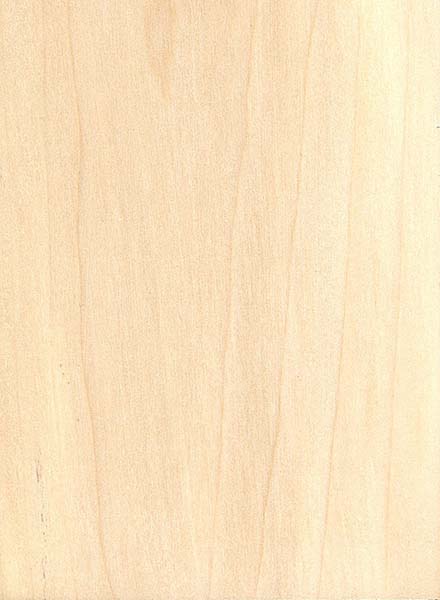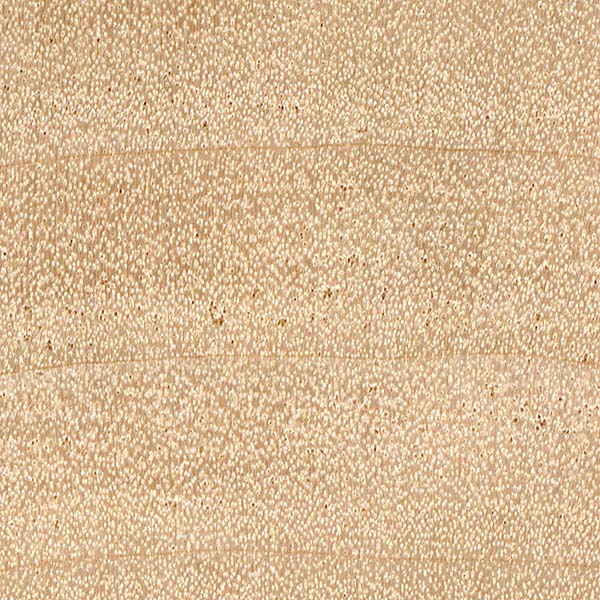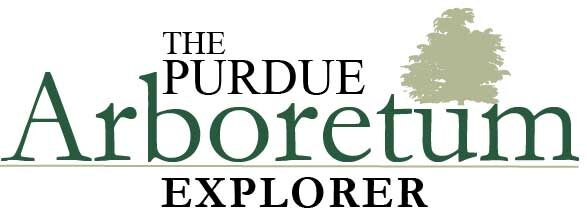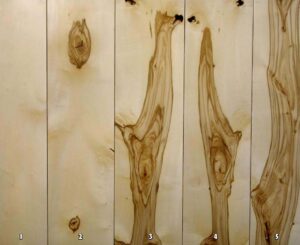Aesculus glabra
Summary
Ohio Buckeye or Aesculus glabra, is a light-weight but firm-textured wood that is very desirable for carving. The pores are the smallest of any of our hardwood lumber species. The tree typically has a wide white sapwood which stains easily and a brown heartwood. Board 1 is flat sawn and shows the very uniform grain characteristics of the species. A few small pin knots are also present. Board 2 is similar but shows the dark grain pattern associated with the knots. Boards 3, 4, and 5 show the rather interesting contrast between the darker variegated heartwood and the white sapwood. As seen in Boards 3 and 4, interesting patterns can be made by book matching pieces cut from near the heart of the log.
History
The trees are generally medium sized. The largest Ohio buckeye reported is about 4 feet in diameter at 4½ feet above the ground.
Color & Texture
Buckeye has a wide white to grayish sapwood with a darker irregular heartwood. The sapwood stains easily and often turns a dark blue-black due to blue stain fungi.
The wood has very small uniformly distributed pores. The growth rings are slightly visible. In the author’s experience, the wood, when used as construction lumber, acts somewhat “rubbery” and not stiff and crisp.
Anatomical and Microscopy

Database

Database
Diffuse-porous; very small pores in no specific arrangement; solitary and radial multiples of 2-3; growth rings faintly distinct due to marginal parenchyma;
rays barely visible even with 10x lens; parenchyma banded.
Wood Properties
- Workability
- It is rated very low in shaping, low in boring, and good in turning.
- Strength
- At 12 percent moisture content, buckeye weighs about 25 pounds per cubic foot, making it one of our lightest
weight woods equivalent to basswood. The mechanical properties of the wood are some of the lowest reported. - Steam Bending
- The wood does not bend well with steam.
- Drying
- A moderate schedule can be used for drying buckeye. Care should be taken to process freshly cut trees as soon as possible to prevent stain.
- Shrinkage
- Very low
- Decay
- The wood is not resistant to decay.
Products
Buckeye is typically for concealed or low-cost parts. It is an excellent carving wood, and in the past, it was used for
artificial limbs. When the material is processed today, it is most
likely to be used for low-strength pallets and crates. It can also be used for paint grade molding.

